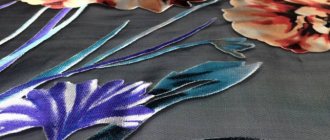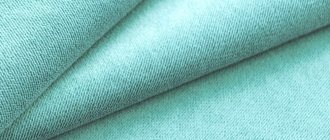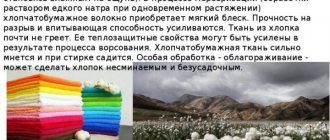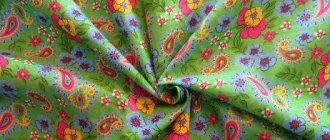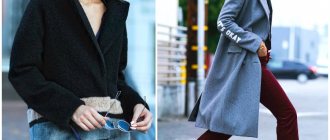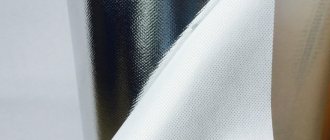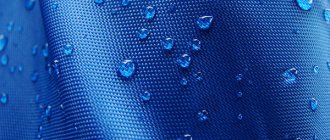History of fabric
The material began to be produced in the last century in the USA. The technology is considered relatively new. Widely used in clothing production, but not universally.
In Russia, wardrobe items made from corn fabric are very rarely sewn, so the material is considered not in demand. The environmentally friendly product for sewing is widely used in America and Western Europe.
Manufacturers fell in love with ribbed material for its versatility and low cost. Experts predict an increase in popularity in the global market.
Advantages and disadvantages
Corn fabric has a lot of advantages, so it is actively used for sewing clothes.
Main advantages:
- absorbs moisture well;
- dries quickly;
- UV resistant;
- holds the dye well, so it does not fade or fade;
- pleasant to the body, soft to the touch, elastic;
- knitwear, stretches well;
- retains heat well;
- wear-resistant.
The first four points make corn an ideal fabric for sewing summer clothes. So, a blouse or tunic made from such fabric can be washed at least several times a day. After a couple of hours it will dry, and then you can put it on again.
How to produce
Despite the fact that chemical processing is used in its creation, the corn material has a natural composition.
Production takes place in several stages:
- starch extraction;
- conversion of dextrose into lactic acid;
- dehydration;
- the polymer is used to produce threads;
- chemical treatment and dyeing.
Pique weaving is created using a system of weft threads. The result is a smooth back and a textured front with a diamond pattern.
What is corn and what types does it come in?
The main feature that corn fabric has is the characteristic relief of the front side, reminiscent of waffles or the surface of a corn cob, while the back of the fabric is soft and smooth. Fabrics with this texture are also known as pique, and their number is quite large. In addition, materials that are completely different in composition and properties can be sold under the name “corn”. However, this name can be fully attributed only to the Ingeo material, which was obtained in 2005 by employees of the NatureWorks LLC corporation (USA).
Real corn fabric is a loose and highly stretchable knitwear with a “waffle” surface. To obtain it, they use threads synthesized from environmentally friendly and renewable raw materials called polylactide, which is a product of corn processing (less commonly, sugar cane). From this polymer, in addition to threads, a biodegradable film is also obtained. The creation of fibers for corn fabric is carried out in the following sequence:
- obtaining corn starch;
- isolation from starch of such a component as destrose;
- processing the resulting dextrose into lactic acid;
- obtaining a polyester compound called polylactide from lactic acid;
- formation of polymer fibers;
- production of knitted or woven fabric.
Fabric made from polylactide raw materials is classified as eco-fabric . It has many positive properties, primarily the following:
- its production does not deplete the Earth’s natural resources and does not pollute the surrounding space;
- knitwear is characterized by high environmental friendliness and complete hypoallergenicity;
- it has excellent absorbent properties;
- dries very quickly;
- has the ability to thermoregulate;
- allows air to pass through well;
- has high wear resistance;
- soft and elastic;
- provides comfortable tactile sensations;
- allows painting in bright, durable colors;
- has high color and fiber structure resistance to sunlight.
Corn cloth can have a wide variety of densities - from carpet to almost invisible mesh, which makes it possible to use it in a wide variety of areas. It is also important that polylactide quickly decomposes in natural conditions without polluting the environment. It should be noted that this material is quite expensive, unlike synthetics sold under the same name. This material is similar to fabric made from polylactide fiber only in its “waffle” surface structure, but its properties are basically the same as those of traditional synthetic fabric.
Composition and characteristics
Corn knitwear is ideal for sewing clothes. The products are practical, comfortable and do not require special care. The fabric is pleasant to the touch, the outer side is ribbed with a pronounced structure, and the inner part is very soft and smooth.
Hypoallergenic material, washable on delicate cycle, resistant to external influences. It is not recommended to iron clothes made from corn, as it will melt when exposed to high temperatures.
Helpful information:
What kind of fabric is interlock foam?
What kind of fabric is brushed footer?
Does not wrinkle and fits the figure. It will be a replacement for natural fabrics that require special care.
pros
- Very soft to the touch material;
- Elastic, stretches well and will help visually model your figure;
- Keeps you warm;
- Quickly absorbs excess moisture and dries;
- Does not fade, the color remains saturated for a long time;
- Belongs to the category of “breathable” fabrics;
- Wear resistance, practicality and ease of care;
- The assortment is represented not only by fabrics, but also by yarn and threads;
- An excellent replacement for polyester and elastane;
For production, corn fabric is used, which is also called Ingeo. Among the famous designers, Giorgio Armani appreciated its advantages and often uses it in his collections.
Minuses
Corn web also has negative qualities, but they are much fewer than the advantages.
- If not properly cared for, it may lose its shape and become deformed;
- Any snag will cause noticeable puffs.
Characteristics and Applications of Corn Fabric
Corn fabric is used to make both clothing items and practical home textiles.
The material may also contain natural cotton, artificial viscose and synthetic polyester and elastane. Regardless of its composition, corn tissue has the following positive properties:
- breathability - the weaving structure of the fabric fibers ensures good air circulation, which does not stagnate and does not cause discomfort;
- hygroscopicity - corn quickly absorbs moisture and does not allow it to accumulate on the skin;
- hypoallergenic - semi-synthetic material has all the positive properties of natural fabric, is suitable for allergy sufferers and does not irritate sensitive skin;
- wear resistance - the fabric is very practical, durable, resistant to tearing and the formation of puffs;
- softness – the material is gentle and pleasant to the touch;
- does not wrinkle - this characteristic compares favorably with such natural materials as linen and cotton, due to the synthetic production method;
- ease of care - the fabric does not require special storage and washing conditions;
- heat retention - the material retains warm air, warms and is therefore suitable for cool weather;
- resistance to ultraviolet radiation - corn does not fade and retains color;
- environmental friendliness - fabric production does not harm the environment, the material decomposes well and does not pollute the environment;
- elasticity – knitted corn stretches and elastically returns to its original shape.
The fabric has practically no disadvantages, but some operating features can be mentioned. If not properly cared for, products will stretch and become deformed. Also, corn should be protected from puffs.
Corn fabric is a versatile material. Both clothing items and practical home textiles are made from it:
- suits, dresses, skirts, sweaters;
- jackets, jackets, trousers;
- hats;
- children's clothing;
- underwear;
- tracksuits (T-shirts, sweatshirts, pants);
- bedding sets;
- blankets and pillows;
- various finishing elements (collars, cuffs).
Soft and thin corn fabrics are considered more elastic, while thick ones hold their shape better. To make the material stretch well, synthetic lycra is added to it. Most often, corn is a mixed fabric consisting of several basic fibers, different in composition and origin.
Care Tips
The balance of strength and flexibility of knitted fabric is achieved through production technology. The products are easy to care for and no special knowledge is required. By following simple rules, you can preserve the original appearance and beneficial properties for a long time.
- How to wash .
It is recommended to wash products by hand. If the owner of an item wants to wash it in a washing machine, he must select the delicate cycle and pack the item in a special bag. Before washing, zippers and locks are fastened, and the item is turned inside out. It is forbidden to twist it, as the corn web may become deformed. - How to dry .
It is not recommended to hang clothes made from corn cloth. Dry in a horizontal position. Avoid exposure to direct sunlight. - Is it possible to iron ?
The description on the label will confirm that you should not iron things made from corn. At elevated temperatures, the fibers will melt. If creases cannot be removed, you can iron them through gauze or thin fabric. Temperature should be less than 100°.
Properties of corn
Corn gained popularity well deservedly. Things made from it are comfortable, practical and easy to care for. It is not yet widespread on the Russian market only because it recently appeared in the country. There is reason to believe that over time the material will become a leader among us.
Clothes made from corn are just as comfortable and comfortable as clothes made from the usual cotton and linen. The advantage is that the new fabric does not shrink and is easy to care for. It is very wear-resistant. Things made from corn retain their attractive appearance for a long time.
The fabric has a very unusual surface. There is a noticeable relief on the front side, and perfect smoothness on the back side. The new material is hypoallergenic and has excellent hygienic characteristics.
The price is also good. Available raw materials and ease of production make corn very accessible. It is no more expensive than other synthetic fabrics.
Clothes made from corn will perfectly highlight your figure. It makes great lightweight summer pieces. Fabric made from corn starch can easily compete with linen and cotton. It is just as light and pleasant to the body, but, unlike natural fabrics, it does not wrinkle at all.
Features of the composition
The material in its pure form is practically never used. It refers to any group of fibers that contains starch from the plant of the same name. Corn threads can be added to natural or artificial fabrics.
The most famous type of similar fabric is Ingeo. It contains 30% corn, 60% polyester, and 10% wool. This mixed structure conserves heat as much as possible; items made from it (pants, dresses, jackets, sweaters, etc.) fit easily and are comfortable to wear.
Also combined with unusual material:
- cotton;
- viscose;
- elastane.
Application of fabric
Corn fabric has proven itself as the main material for dresses, suits, sweatshirts, sweaters and even hats. World-famous designers love and appreciate “corn” for its environmental friendliness, lightness and unusual appearance. Not a single fashion show with an environmental focus can do without linen and cotton fabrics, and without this material.
An important advantage of “corn” in summer clothing collections is its breathability, as well as its ability to absorb moisture and maintain a comfortable body temperature. Corn fabric is also used to create beautiful flowing jackets and cardigans that accentuate the figure. Descriptions and photos of products made from your favorite material confirm its uniqueness and originality.
The universal properties of this type of fabric make it possible to use “corn” also in autumn and winter clothing collections. This fiber perfectly warms in cold weather and protects from autumn winds.
Advantages and disadvantages
Corn material is an excellent alternative to conventional synthetic fabrics, which, for all their advantages, often cause a feeling of overheating and discomfort during long-term use.
Corn fabric has good air exchange and high hygroscopicity, so it is suitable for wearing even in hot summer weather.
Pros:
- softness and pleasant tactile sensations;
- strength;
- ease;
- beautiful appearance;
- sufficient level of air exchange;
- high hygroscopicity;
- good vapor permeability;
- hypoallergenic;
- elasticity and resilience;
- the ability to retain heat without overheating the body;
- wear resistance;
- durability;
- crease resistance;
- environmental friendliness;
- safety;
- multifunctionality.
Minuses:
- difficult to find in textile stores;
- high price;
- With prolonged exposure to ultraviolet radiation, matter can be destroyed.
Corn does not absorb odors and dirt, so it is always easy to clean and does not require particularly careful care.
In addition, this type of textile is unattractive to the life of various microorganisms and bacteria, which makes this fabric hygienic.
How to properly care?
Caring for eco-fabric made from corn is not too difficult. Products made from it are recommended to be washed carefully at 40 degrees with neutral products that do not contain bleaches. If drying is done in a well-flatten form, you can do without an iron; in extreme cases, creases can be steamed by weight.
However, before placing things in the closet, you need to make sure that they are completely dry and that there is no excess moisture in the room. The same rule applies to mixed textiles. As for carpets and furniture upholstery, they are cleaned with soapy water and then dried well. Synthetics can be washed in normal machine mode in not too hot water; there is no need to iron them.
